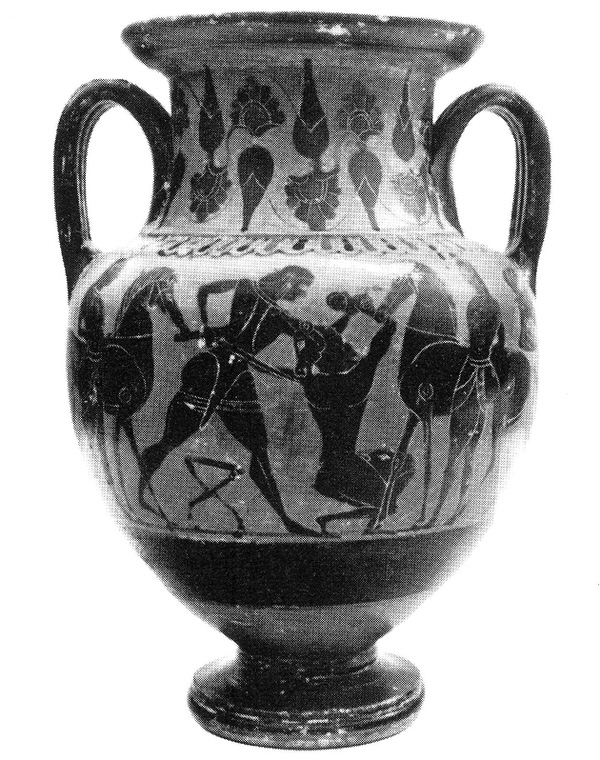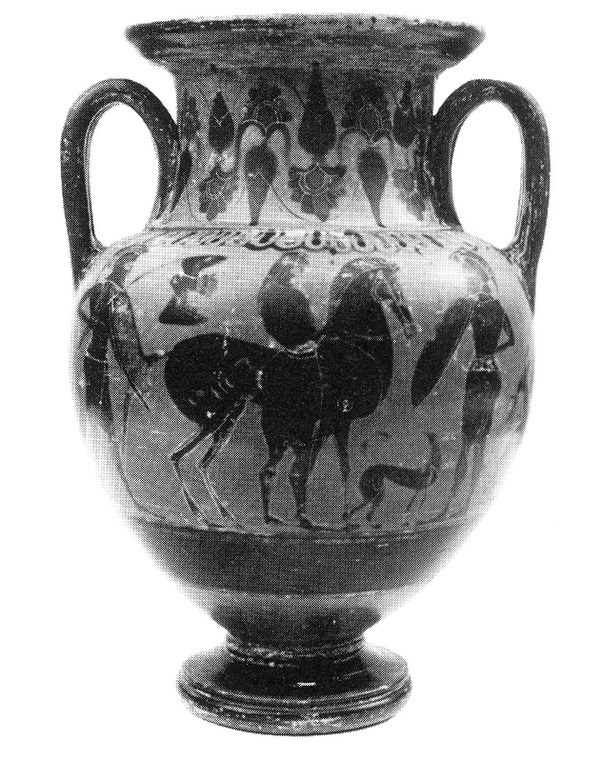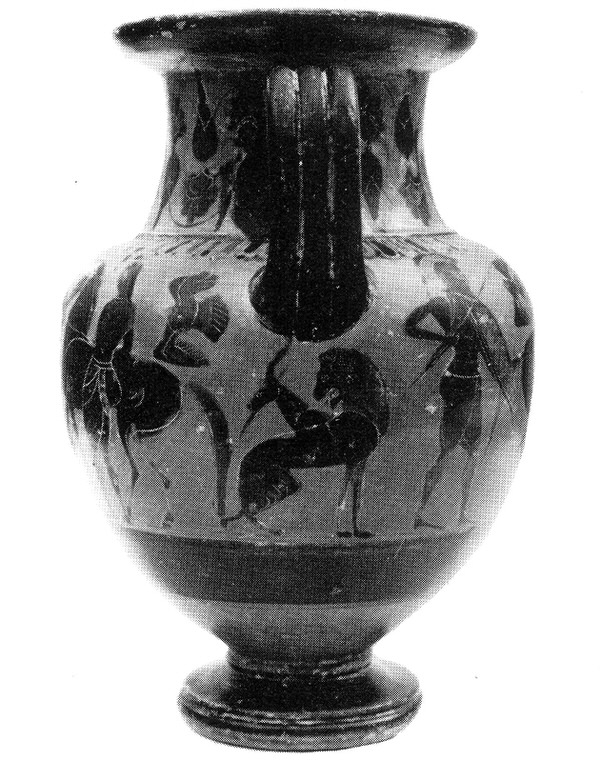Attican amphora with black characters
This is one of the rare examples of earthenware made in Athens and decorated with black characters on a red background, from the nineteenth century plundering of the Tharros necropolises, still in intact, from Sardinia (figs. 1-4).




The amphora has been defined as one with a “separate neck”, meaning that the neck is not joined smoothly to the body, but has a line around the base, separating it. It has been attributed to the Hyblaea Class by the expert Sir John D. Beasley. The items in this class were often decorated by painters from Athens, including the painter BMN, who has been attributed with the painting of this work.
On the main side there is a painting of the killing of the Minotaur by Theseus. The hero holds the monster’s hand, which has a stone in it, and pushes him to the ground, stabbing him with his sword.
On the second side, there is a general representation of a young man with a horse and dog and two armed warriors at the sides. The Chimera is painted under the handles. The amphora, made in Athens about 530-20 B.C., probably came to Tharros from Etruria, in particular Vulci, where the largest number of items by the painter BMN have been found, and is proof of the relations between the Punic cities in Sardinia and the large Etruscan centres.
Bibliografia
- J. D. BEAZLEY, Attic Black-Figure Vase-Painters, Oxford 1956, p. 226.
- C. TRONCHETTI, Contributo allo studio del commercio tharrense. Vasi attici a figure nere del Museo Archeologico Nazionale di Cagliari, in Melanges de l’Ecole française de Rome, 91, 1979, pp. 63-69.

 VR
VR